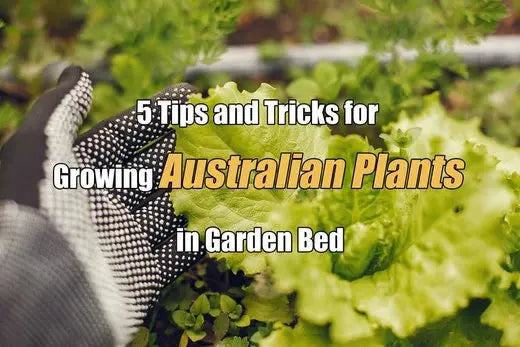Enhancing Soil Drainage with Raised Beds
By Tony
Author Bio: Tony, a passionate horticulturist and gardening enthusiast, has been sharing his expertise and knowledge through his writings for years. With a deep understanding of plants, soil, and sustainable gardening practices, he offers insights that are both practical and enlightening.

Gardening is an art; like all art forms, it requires a blend of knowledge, intuition, and creativity. One of the foundational elements of gardening is ensuring that your plants have the right environment to thrive. Central to this is soil drainage. Let's delve into how raised beds can be a game-changer in enhancing soil drainage.
Understanding the Importance of Soil Drainage
Imagine, for a moment, that you're standing in a room filled with water up to your ankles. The water is cold, and it becomes harder to move, breathe, and think with every passing minute. This is what plants experience when they are in soil with poor drainage.
- The Perils of Stagnant Water: Much like humans, plants need balance. They need water to grow, but too much water can be harmful, especially water that doesn't drain away. Stagnant water around the roots creates an anaerobic environment devoid of oxygen. This can lead to the roots rotting, cutting off the plant's lifeline.
- Nutrient Lockout: Waterlogged soil can also lead to a phenomenon known as nutrient lockout. This is when the roots cannot absorb essential nutrients from the soil, either because they are dissolved in excess water or because the pH of the soil has been altered. A plant without its necessary nutrients is like a car without fuel; it won't go far.
- The Breath of Life: Roots don't just absorb water and nutrients; they also breathe. They take in oxygen, which is essential for their survival. Well-drained soil balances moisture and air, allowing the roots to breathe freely.
In the grand tapestry of gardening, soil drainage is a thread that binds everything together. It's the difference between a garden that merely survives and one that thrives. As we'll discover, raised beds are a simple yet effective solution to many drainage woes.
The Magic of Raised Beds
Raised beds are not just a modern gardening trend but a testament to human ingenuity in the face of gardening challenges.
Control Over Environment
One of the most significant advantages of raised beds is their unparalleled control over the gardening environment.
- Soil Quality: With raised beds, gardeners aren't at the mercy of the existing soil in their yard. Whether sandy, clayey, or rocky, you can bypass these challenges by filling your raised beds with a premium mix of soil tailored to your plant's needs. This ensures the plants have access to nutrient-rich soil, promoting healthy growth.
- pH Level Management: Different plants have different pH level preferences. Blueberries thrive in acidic soil, while asparagus prefers a more alkaline environment. With raised beds, adjusting the pH level becomes a breeze. You can create the perfect pH environment for each plant type by adding specific amendments.
- Temperature Regulation: Raised beds warm up faster in the spring and stay warm longer into the fall. This extended growing season is a boon, especially for plants that require a more extended maturation period.
Versatility
Raised beds are the epitome of adaptability in the gardening world.
- Diverse Planting: From vibrant ornamental flowers that attract pollinators to juicy vegetables for your dinner table, raised beds are versatile enough to support various plants. The controlled environment ensures that each plant type gets its specific needs met.
- Optimal Drainage: One of the standout features of raised beds is their ability to provide excellent drainage. The elevated design ensures water doesn't stagnate, preventing root rot and other water-related diseases. This is especially beneficial for plants like succulents that prefer well-draining soil.
- Space Maximization: For those with limited garden space, raised beds offer a solution to grow vertically. Adding trellises or supports allows you to grow climbers and vine plants, maximizing yield in a small footprint.
Aesthetics and Organization
Beyond their functional benefits, raised beds are a visual treat and an organizer's dream.
- Design Flexibility: Raised beds can be crafted to fit any aesthetic vision. Whether you're aiming for a rustic look with reclaimed wood or a modern vibe with sleek metal, the design possibilities are endless. Their geometric shapes can bring symmetry to a garden, while free-form designs add whimsy.
- Garden Layout: For those who love a well-organized space, raised beds are a godsend. They create clear distinctions between different plant types, making maintenance tasks like watering, pruning, and harvesting more systematic.
- Accessibility: Raised beds can be designed at varying heights, making them accessible for everyone, including those with mobility challenges. This inclusivity ensures that everyone can experience the joy of gardening.
Designing Raised Beds for Optimal Drainage
Design plays a pivotal role in the effectiveness of raised beds. It's not just about elevating the soil; it's about creating an environment where water flows naturally and efficiently.
Material Matters
The choice of material for your raised bed is not just an aesthetic decision; it has functional implications, too.
- Wood: Wooden raised beds are a classic choice. They offer a natural look and are relatively easy to construct. Cedar and redwood are particularly popular due to their resistance to rot. However, wood can decay over time, especially if it's in constant contact with moist soil. This decay can, in turn, improve drainage as gaps form, but it also means the bed might need replacing after a few seasons.
- Stone or Brick: These materials are durable and long-lasting. They also have the added advantage of retaining heat. As the stones or bricks warm up during the day, they can aid in evading excess moisture from the soil, ensuring it doesn't remain waterlogged. However, it's essential to ensure gaps or proper drainage holes when using these materials to prevent water stagnation.
- Metal: Corrugated metal raised beds are becoming increasingly popular. They are durable, resist rot, and add a modern touch to gardens. Like stone, metal can retain heat, aiding in moisture evaporation.
Shape and Size
The geometry of your raised bed can influence how water drains from it.
- Rectangular Beds: These are the most common shapes, primarily because they are easy to construct and fit neatly into most garden layouts. Their straight edges and corners allow for predictable drainage patterns.
- Circular Beds: Circular Beds can offer a more even drainage pattern as water moves uniformly from the center to the edges. They also add a unique visual element to gardens.
- Tiered Beds: These are multi-level raised beds, where each level can plant different crops. The tiered design adds visual interest and allows water to flow from the top tier to the ones below, ensuring efficient water use.
- Depth: The depth of the raised bed is crucial. A deeper bed provides more space for roots to grow and spread. It also ensures enough soil to absorb and drain water effectively. A depth of at least 12 inches is recommended, but for plants with deeper roots, going up to 24 inches might be beneficial.
Placement
Where you place your raised bed in your garden can influence its drainage efficiency.
- Sunlight: A spot that receives ample sunlight can aid in evaporating excess moisture. Sunlight not only warms the soil, aiding in water absorption but also ensures that the surface doesn't remain damp for extended periods.
- Garden Slope: If your garden has a natural slope, use it to your advantage. Placing raised beds in alignment with the slope ensures that water drains with gravity, preventing pooling or stagnation.
Choosing the Right Soil Blend
The
Loamy Soil: The Gardener's Dream
Loamy soil is often considered the holy grail for gardeners, and a good reason.
- Composition: Loamy soil strikes a harmonious balance between sand, silt, and clay. Each of these components brings its own set of advantages. Sand ensures good drainage, silt retains moisture and nutrients, and clay provides structure and cohesion.
- Benefits: This balanced mix ensures that the soil retains enough moisture for plants to access but not so much that it becomes waterlogged. The result? Plants that are well-hydrated and free from the risks of root rot.
The Power of Organic Matter
Introducing organic matter to your soil blend can be a game-changer.
- Enhanced Structure: Organic matter, whether compost, rotted leaves, or decomposed manure, can significantly improve the soil's structure. It makes the soil more porous, ensuring water flows freely and roots access to air.
- Nutrient Boost: Beyond drainage, organic matter is a powerhouse of nutrients. As it breaks down, it releases essential nutrients that plants can absorb, promoting healthier growth. For those looking to ensure their trees and plants get the best care, services like Panorama Tree Care offer expert guidance and solutions.
Navigating the Clay Conundrum
While clay soil is nutrient-rich, it poses challenges regarding drainage.
- Drainage Challenges: Clay particles are tiny and pack closely together, leaving little room for water to flow. This can lead to waterlogging, especially in areas with heavy rainfall.
- Amending Clay: If your garden's natural soil is clay-heavy, don't despair. Adding sand or organic matter can break up the clay, improving its drainage capabilities. The goal is to strike a balance where the soil retains the nutrients from the clay but also has improved drainage from the added components.
Maintenance Tips for Raised Bed Drainage
A garden is a living entity; like all living things, it requires care and attention. Ensuring optimal drainage in your raised beds is not a one-time task but an ongoing commitment.
Vigilance Against Clogs
Over time, primarily if you've used a base layer like gravel, silt, and debris can accumulate, leading to clogs. Regular checks can make it a habit to inspect the base layer of your raised beds. Ensure that water can flow freely and that there are no blockages. This is especially crucial after heavy rains.
- Aeration:
Letting the Soil Breathe Compaction is standard in gardens, especially in areas with heavy foot traffic.
The Need for Aeration: Compacted soil can hinder water penetration, leading to pooling on the surface. By aerating the soil, you create channels that allow water to seep in, ensuring consistent moisture levels.
How to Aerate: Using a garden fork, gently pierce the soil regularly. This improves water flow and ensures that plant roots have access to air. - Watering Wisdom:
Water is life, but in gardening, moderation is key.
Avoid Overwatering: While it might seem counterintuitive, overwatering is common in raised beds. Because they have improved drainage, they can dry out faster, leading gardeners to water them more frequently. It's essential to strike a balance.
Weather Watch: Adjust your watering schedule based on the weather. After heavy rains, give your beds a break. Conversely, they might need some extra hydration in hot, dry conditions.
Conclusion
Raised beds are more than just a gardening trend. They offer a practical solution to one of gardening's age-old problems: ensuring proper soil drainage. By understanding and implementing the principles discussed, you can create a thriving garden where plants have the perfect growing environment. Happy gardening!


